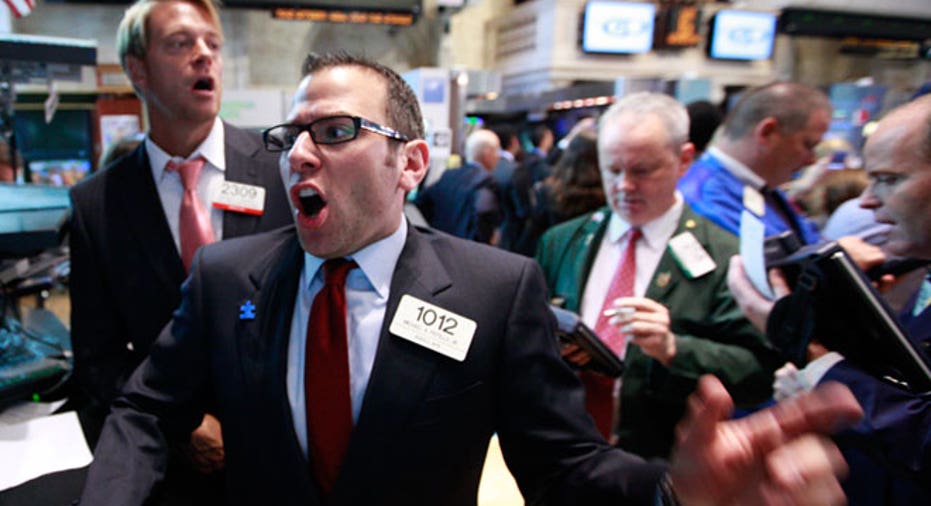For Investors, Now's Not the Time to Be Overconfident

The equity market's confidence bubble is bound to burst. It’s just a question of when.
That was the message from Barclays Head of Research Larry Kantor at a Thursday briefing in the British investment bank’s New York headquarters.
“We’ve come too far too fast. Not only that, but probably more worrisome, in a way, is that everyone’s sort of jumped on the bandwagon,” he said.
The market might be setting itself up for a big disappointment as the Dow and S&P 500 hover around record highs, supported by a recovering U.S. economy, aggressive monetary policy support from the Federal Reserve and low market volatility. Adding to that, rallying stocks are outperforming nearly every other asset class. Kantor argues that thanks to 9% gains so far this year on the S&P 500 and the “super optimistic” mood on Wall Street, it’s as if the “wall of worry’s been climbed already.”
He warned, despite a seemingly rosy picture, the relative calm in the market is reason to be concerned and the environment is “ripe for a correction.” And although history doesn’t necessarily repeat itself, it often tends to rhyme.
“There’s no question about that,” he said. “However, we don’t claim we can time this correction, I don’t think anyone can. But the most important thing is we don’t think the correction will be very big. In fact, we don’t think it will be as big as the ones we’ve seen the last few years when we had bigger systemic risks.”
Of course, the real cause for concern comes from increasing tension in Europe, with worries of a major flare up of the region’s debt crisis. Still, worries echoing through the market aren’t as severe as they were in the past when headlines out of Europe had a tendency to roil Wall Street. Analysts say the new-found coolness over Europe came after European Central Bank President Mario Draghi vowed to “do whatever it takes” to save the common currency – including the outright purchases of sovereign debt.
It’s not as though Europe can’t still shake markets, though. This week, worry came from Cyprus as concerns mounted it might not receive a much-needed $13 billion bailout amid a political battle over how the rescue would be funded. Volatility, as tracked by the VIX, has shot up some 20% as markets have bounced up and down – but it is still tame compared to surges seen when the crisis was at its peak. In fact, the setbacks this week in U.S. markets have done little to pull the Dow and S&P far from record highs.
“It’s impressive how much markets have shrugged off things like the Italian election results or Cyprus. Things that, a year ago, would have wreaked havoc in markets,” Kantor said. “It speaks to the success of policy – particularly the ECB providing liquidity and providing this backstop. That’s impressive and we think that sticks for awhile.”
Dan Greenhaus, chief global strategist at BTIG, said the fact that markets are moving higher, seemingly without too much concern for the escalating tension in Europe, is indicative of a problem lurking just below the surface.
“Our meetings with clients are peppered with questions about earnings expectations and whether they’re too optimistic, about economic growth assumptions and whether they’re sustainable and numerous questions about Washington and Europe,” he said.
Indeed, Kantor warned there are still several issues looming. Voters in Italy are still unhappy about the outcome of the February election, and the nation now is in the midst of a second recession – one that’s lasted for more than a year. In addition, Kantor sees the unemployment rate in Europe continuing its upward climb, and an increase in public sector reliance on taxpayers and bondholders – and now depositors in Cyprus to fund rescues. At some point, the dissatisfaction will come to a head and patience will run out, he said.
“This is not a happy group over there and if things don’t start improving, you’re just going to see a continuation of voter dissatisfaction with revolt,” he said. “It’s worth keeping in mind these ECB actions are not a solution. They buy time. Not in the next few months, but down the road, we see trouble there, a revival of tensions, volatility, and systemic risk.”
In addition to European woes weighing on the market, Kantor said there are worries at home to be concerned about. With more positivity in the markets thanks to an improving domestic economy and a recovering housing market in which sales of existing homes just hit a three-year high in February, for Kantor, the bar has been raised. In the past, solid data were enough to propel markets to rally; now decent numbers just aren’t enough – it will take truly good numbers to move the market significantly higher.
If the market is able to continue its climb higher, there’s a risk for a downhill slide thanks to a pullback in easing from the Fed. Barclays says it may start tapering bond purchases as early as 2014 – a move that could spook Wall Street.
“The Fed could look offsides a lot sooner than investors think. We’re not saying the Fed is going to start tightening this year, and perhaps not even slowing the QE purchases. Investors need to start pricing this in and that could be a pretty nasty environment. I find it very hard to believe this had nothing to do with asset price appreciation across the board for fixed income and equities,” Kantor said.